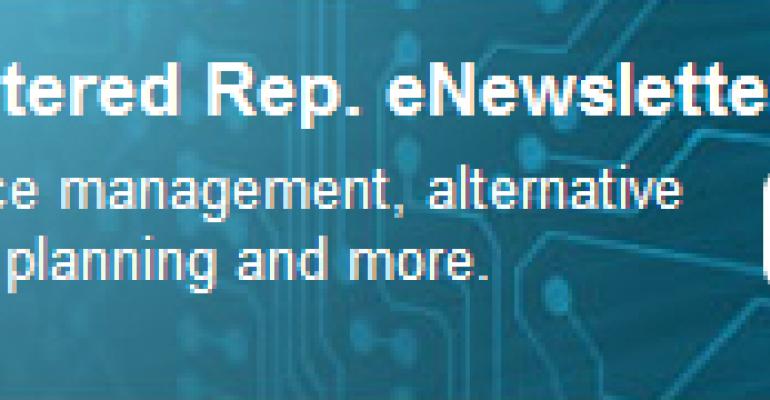Chicago—“Our firm keeps telling us to bring in more affluent clients, they’ve created all these new wealth management tools. But there’s a disconnect between the realities that I’ve got to do, day to day, and the support I’ve got,” Joe groaned. “So how realistic is it to be able to build the 21st-century financial practice you described?”
Good question. Why? One of the glaring issues is that nearly 75 percent of advisors share an assistant in some form or another. From an advisor’s psychological perspective, this becomes compounded by the lingering impact the financial crisis has had on budgets; back office and other non-revenue support personnel are the first to go. Unfortunately, this also becomes an advisor excuse for not being in a growth mode.
That said, not every advisor with one-on-one support has developed a true 21st-century financial practice, and not all advisors with this type of support are acquiring more affluent clients. Yet, as I explained to Joe and his colleagues in the audience, the realities of developing a 21st-century financial practice are within the grasp of nearly every advisor, shared assistant or not, but growth must be part of the equation. And you probably guessed it—Joe wasn’t growing.
Advisor realities regarding practice management can be segmented into four interconnected components, each systematized into a process; wealth management, client loyalty, business development, and operational efficiency. The secret is in making these processes efficient, since too many practice management process can interfere with growth.
The following are the four components, what I call “practice management reality,” that I outlined for Joe and his colleagues.
Wealth Management. Advisors must be relevant in today’s environment. Because today’s affluent want comprehensive wealth management, this is what advisors need to be providing to their top clients: financial planning, investment management, protection, lending, financial organization, outside experts, etc. It is important to create a system you follow for every client.
The key is to determine the scope of wealth management services you’re going to provide, segment your clients, and start fine-tuning your delivery of these services to your top clients. The idea is to make them more uniform within your practice, but approach it one client at a time. Not every client will need every aspect of your wealth management process, but you want to have a clearly defined process that you follow.
Client Loyalty. Simply providing comprehensive wealth management services to your affluent clients doesn’t ensure loyalty. Affluent client loyalty requires another factor—a personal relationship. This requires segmenting your client base and determining who qualifies as one of your top clients, then developing a system for collecting personal information from these clients so you can execute well-timed personal touches. Also, think in terms of doing non-business, social activities with these clients.
This is an area where it is helpful to think in terms of being able to periodically “surprise and delight” top clients. Once again, in order to have any type of consistency in these personal touches, this must become a process within your practice. If not, you’ll fall into the trap of winging it.

Business Development. Because word-of-mouth influence is so powerful in affluent circles, it’s virtually impossible to acquire new affluent clients without loyal affluent clients. In the short term, the idea is to have a 12-month metrics tracker (growth goals, new assets, number of new clients, fee-based revenue, production, etc.) that is complete with a daily action plan linked to your long-range business plan.
This involves making a rainmaker’s commitment. Whether it’s acquiring 10 or more new $1 million or greater clients (what we coach to) or your own version, you need the right combination of marketing activities and affluent sales skills.
Joe, like many advisors, thinks of marketing in terms of using the tactics of yesteryear (cold-calling, direct mail, public seminars, etc.), and because they aren’t getting the results, the advisors find themselves frustrated and they stop marketing. Today’s high-impact marketing activities all revolve around getting personal and stimulating positive word-of-mouth.
Operational Efficiency. This is the glue that holds all four components together. It’s the administrative side of the business that must be executed flawlessly, since mistakes can be costly. Because of this, many advisors consider operational efficiency as the end-all be-all to practice management. It’s not. Rather it’s the nitty-gritty behind the scenes that pulls a 21st-century financial practice together.
Operational efficiency is where you define everyone’s roles and responsibilities, whether it’s your shared assistant or your own role. You also want to make certain that each role has clear performance expectations (including yours). Much of this is common sense, but common sense isn’t always common practice.
As I told Joe and company, the realities of practice management require advisors to approach their business like a real business. They are no longer simply salespeople. Yet, the idea is to keep things simple, have procedures that are efficient, exceed client expectations, and always be rainmaking.
If you would like FREE excerpts of our most recent research reports, please visit our download center by clicking here. Enjoy!
If you would like to learn more please visit http://www.oechsli.com
Also, if you haven’t already - join The Oechsli Institute’s Group on LinkedIn!
Once again, we want to thank all of you who have e-mailed comments and questions to us. We will continue to do our best to answer each one.
If you have any topic suggestions or special requests, please contact Rich Santos, publisher of Registered Rep. and Trusts & Estates magazines, at [email protected].






